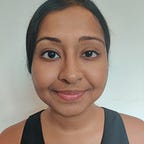Window Shopping in Data Science: Udemy
I wanted to study Data Science, perhaps even get a job as a Data Scientist.
I’d read the articles claiming this is the ‘it’ job. I’d started religiously listening to podcasts where I was learning more and more about the developments and challenges in the field, whether these were legal or technological. Now the question was… how to do it?
I spent a year shopping around looking into courses and bootcamps on data science, machine learning, and artificial intelligence to home in on what really interested me. At this stage I realised enrolling in a bootcamp was far too much of a financial and time commitment. This is where I found Udemy to be perfect.
Udemy courses are affordable, and you can learn a lot. Well, I guess you will get out of them as much you are willing to put into them.
I came across Jose Portilla’s course ‘Python for Data Science and Machine Learning Bootcamp’ in 2020, a time when in Hong Kong we were still being encouraged to isolate in our homes. The work-from-home culture really did help with my journey in data science. Like many others, I suddenly had a lot of time on my hands to really sink my teeth into what I was learning, allowing me to spend time doing the extra reading Jose recommends along with each module. The reading can be quite heavy on maths at times, but if you have high-school level statistics down, it should be relatively straightforward to understand. If you aren’t coming from a maths background, take it from someone who often has to nudge their students to some independent work, look up the Statistics and Probability course on Khan Academy. It’s pretty great!
I teach maths and physics professionally, so I might be a little biased here, but I found the reading to really help me better understand the workings of many of the machine learning algorithms. I’ll go into a little more detail on these in later articles. If you are shaky or not as confident with programming in Python, I’d recommend brushing up before you take a stab at this course. There is a module dedicated to basic Python programming at the beginning of the course and a few more on data visualizations with Matplotlib, Seaborn, and Plotly which I found very helpful as a beginner.
By the end of the course, you have a pretty good idea of the how’s: how to clean your data and prepare it for machine learning models, how to differentiate between classification, clustering and regression problems; how to set up a basic recommender system. One negative about this course is that it is a little dated, or at least it was when I did it. Some of the code won’t work because of updates, but usually the Q&A section is helpful with finding a solution to whatever bugs you come across. Overall, I found the material easy to digest with plenty of hands-on practice. As it’s a self-paced course, I tried to clock in 3–4 hours per day around my work schedule. It wasn’t easy, but definitely fun.
As I was nearing the end of this course, I also spent some time brushing up on R because I’d read about how most data scientists have some experience in R. I found Machine Learning A-Z™: Hands-On Python & R In Data Science by Kirill Eremenko and Hadelin de Ponteves to be quite straightforward and easy to follow. As I was new to data science at this point, I enrolled in this course as well because it allowed more practice with material that I’d seen with Jose Portilla’s course.
Bootcamps are expensive and I wanted to make sure I was going to be interested in data science once the initial wow factor wore off. Overall, this was a pretty good decision, as I was far more confident in committing to a bootcamp by the end of these two courses.
